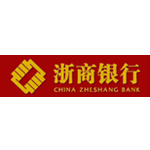CZBANK(601916)
Search documents
数字金融破局:浙商银行“铁路运费证”让大宗商品运输资金活起来
Zheng Quan Shi Bao Wang· 2025-09-29 05:53
Core Insights - The introduction of the "Railway Freight Certificate" by Zheshang Bank in collaboration with China National Railway Group effectively addresses the financial pressures faced by commodity enterprises in railway transportation [1][2][5] Group 1: Industry Context - Railway freight is a crucial component of bulk commodity transportation, with national railway freight volume expected to exceed 5.1 billion tons in 2024, of which coal accounts for over 55% [2] - Transportation costs for coal can represent 15% to 30% of total procurement costs, influenced by factors such as distance and energy fluctuations [2] - The industry faces challenges with cash flow due to a common practice of "upstream cash, downstream credit sales," leading to significant capital occupation for freight payments [2][3] Group 2: Financial Innovation - The "Railway Freight Certificate" combines domestic letters of credit with railway logistics, allowing enterprises to pay freight using bank credit and repay later, streamlining the process [3][4] - The first transaction of this service was executed for Huainan Mining Group with a credit amount of 1 billion yuan, significantly alleviating their freight payment pressures [4] Group 3: Implementation and Expansion - Following the initial success, Zheshang Bank has expanded the "Railway Freight Certificate" service to other regions, including Chengdu, Beijing, and Xi'an, demonstrating a replicable model for various enterprises [4] - The service has been adopted by both state-owned energy groups and large private logistics companies, creating a positive demonstration effect [4][5] Group 4: Collaborative Benefits - The "Railway Freight Certificate" creates a win-win situation for railways, banks, and enterprises, ensuring timely freight payments and reducing financial costs for companies [5] - Zheshang Bank aims to deepen cooperation with China National Railway Group and expand the service nationwide, enhancing supply chain resilience and supporting high-quality economic development [6]
华宝基金关于旗下部分基金新增南京银行股份 有限公司为代销机构的公告
Zhong Guo Zheng Quan Bao - Zhong Zheng Wang· 2025-09-29 01:41
华宝基金关于旗下部分基金新增南京银行股份 有限公司为代销机构的公告 根据华宝基金管理有限公司(以下简称"本公司")与南京银行股份有限公司(以下简称"南京银行")签 署的《证券投资基金销售代理协议》,本公司自2025年09月29日起增加南京银行为以下适用基金的代销 机构。 一、适用基金如下: ■ 二、投资者可到南京银行办理上述基金的开户、认购、申赎及其他业务。投资者可以通过以下途径了解 或咨询相关情况: (1) 南京银行股份有限公司 客户服务电话: 95302 客户服务电话:400-820-5050、400-700-5588 公司网址:www.fsfund.com 风险提示:基金管理人承诺以诚实信用、勤勉尽责的原则管理和运用基金资产,但不保证基金一定盈 利,也不保证最低收益。投资者投资本公司旗下基金时应认真阅读基金的基金产品资料概要、《基金合 同》和《招募说明书》。敬请投资者注意投资风险。 特此公告。 华宝基金管理有限公司 2025年09月29日 华宝基金管理有限公司关于以通讯方式召开 华宝中证消费龙头指数证券投资基金(LOF) 基金份额持有人大会的公告 一、召开会议基本情况 根据《中华人民共和国证券投资基金法 ...
上市银行“十四五回望”之资负结构与息差变迁
CMS· 2025-09-28 15:09
Investment Rating - The report maintains a recommendation for the banking industry [3] Core Insights - The report provides a comprehensive analysis of the asset-liability structure and interest margin changes of 42 A-share listed banks during the "14th Five-Year Plan" period, highlighting a shift towards corporate loans on the asset side and a stronger retail focus on the liability side [12][14] - The asset-liability structure indicates a significant increase in the proportion of corporate loans, rising from 57.02% to 63.22% from the end of 2020 to mid-2025, while the proportion of demand deposits decreased from 41.94% to 30% [12][14] - The report notes a decline in both asset yield and interest margin, with the yield on interest-earning assets dropping from 4.43% to 3.32% and the net interest margin decreasing from 2.23% to 1.53% during the same period [14][15] Summary by Sections Overall Asset-Liability Structure and Interest Margin Changes - The asset-liability structure shows an increase in loan-to-earning asset ratio from 54.19% to 56.49%, with corporate loans making up a larger share of total loans [14][15] - The average yield on interest-earning assets decreased significantly, with the loan yield falling from 5.34% to 3.82% [15] - The net interest margin for listed banks remains higher than that of commercial banks, despite a decline [14][15] Changes in Each Banking Sector's Asset-Liability Structure and Interest Margin - City commercial banks experienced a more significant increase in the proportion of corporate loans, with their interest margin narrowing less compared to other banks [18] - The report highlights that the proportion of deposits in interest-bearing liabilities for state-owned banks decreased, while it increased for rural commercial banks [18] - The decline in interest-bearing liabilities' cost rate was most pronounced in city commercial banks, leading to a smaller reduction in their interest margin [18]
“发现不一样,让年轻选择年轻” ——浙商银行北京分行启动2026校园招聘
Bei Jing Shang Bao· 2025-09-28 13:12
为进一步加大、加快优秀青年人才储备,落实好"123人才计划",推进队伍结构优化,9月24日至25日,浙商银行北京分行走进中央财经大学、对外经济贸易 大学,举办2026校园招聘宣讲会。浙商银行北京分行党委书记、行长龚国强,浙商银行长沙分行党委书记、行长许创强,浙商银行北京分行党委委员陈泽琦 出席,浙商银行人力资源部相关负责人,长沙分行、太原分行、呼和浩特、天津分行等分行相关负责人参加。 宣讲会前,浙商银行北京分行通过校园微信群、学校官网、邮件、派发折页传单和张贴海报等形式开展线上线下宣传,营造浓厚的宣讲活动氛围。活动当天 现场人气火爆、气氛热烈,吸引了百余名学生参加。 宣讲会上,浙商银行总分行资深HR详细介绍了浙商银行发展历程和当前的发展态势,并为学子们谋划未来职业发展。中央财经大学和对外经济贸易大学均 为全国重点财经院校,学子作风朴实、专业能力突出、吃苦耐劳,与浙商银行的发展方向非常契合。浙商银行领导向学子发出诚挚邀请,希望更多才俊加盟 浙商银行,成为浙商银行长足发展的中坚力量,在浙银广阔平台实现个人与企业共同发展。 为了让同学们更深入了解浙商银行工作发展情况,在浙商银行北京分行工作的财大和贸大校友现场向学生 ...
固收深度报告20250927:从42家上市银行半年报解读银行债券投资“攻守道”





Soochow Securities· 2025-09-27 14:32
1. Report Industry Investment Rating No information about the report industry investment rating is provided in the given content. 2. Core Viewpoints of the Report - External environment factors such as interest rate fluctuations, bond supply - demand, and policy orientation jointly impact bond investment returns. In H1 2025, the bond investment of 42 listed banks showed certain characteristics in scale, structure, and profit and loss, but there are still challenges in maintaining stable returns in the future [1]. - The overall bond investment scale of 42 listed banks expanded steadily in H1 2025. There were differences in the investment structure among different types of banks, with state - owned banks and city commercial banks having stable growth in the bond allocation portfolio, while joint - stock banks and rural commercial banks increased their efforts in the bond trading portfolio. The bond investment portfolio generally presented a pattern of "stable foundation and flexible gain" [1]. - The coupon income of 42 listed banks was generally stable in H1 2025 but showed a slight year - on - year decline. The fair value change loss was significant, and the investment income increased. However, the bond investment of the banking industry still faces pressure to maintain stable returns [1]. 3. Summary According to the Table of Contents 3.1 42 Listed Banks' Bond Investment Volume - **Overall Bond Investment Scale: Steady Expansion**: In H1 2025, the total scale of the three types of bond - type financial assets of 42 listed banks showed a steady expansion trend. The growth of debt investment - type financial assets measured at amortized cost was relatively slow, while the growth of trading financial assets measured at fair value and included in current profits and losses was relatively large, indicating that banks increased the proportion of trading positions [9]. - **Differentiated Bond Investment Distribution Structures among Different Bank Types**: In H1 2025, state - owned banks and city commercial banks showed stable growth in the bond allocation portfolio, which may be related to their participation in the primary - market issuance of important national and regional bond varieties. Joint - stock banks and rural commercial banks slightly weakened their bond allocation power but significantly increased their efforts in the bond trading portfolio, showing a differentiated feature of "stable allocation by large banks and prominent trading flexibility by small and medium - sized banks" [13]. - **Bond Investment Allocation Tilted towards Government - Related Bonds**: In H1 2025, commercial banks increased their allocation of government - related bonds, with an average month - on - month increase of about 10% for state - owned banks, joint - stock banks, and city commercial banks, and a slightly smaller increase for rural commercial banks. The allocation of financial bonds and other bonds was differentiated. All banks held a relatively large scale of government - related bonds, followed by financial bonds and credit - related bonds [18]. - **Correlation between Financial Asset Types and Bond Variety Structures**: The banking industry maintained a stable growth of interest - rate bonds in the bond allocation portfolio and increased the allocation of credit bonds, while the allocation of financial bonds was relatively weak. In the bond trading portfolio, interest - rate bonds and financial bonds were the core varieties, with a more significant increase than credit bonds, showing a "stable foundation and flexible gain" pattern [22]. 3.2 42 Listed Banks' Bond Investment Profit and Loss - **Coupon Income: Generally Stable and Still the Main Source of Income**: In H1 2025, the total coupon income of 42 listed banks decreased slightly year - on - year. Although the scale of held - to - maturity bonds increased, the decline in the coupon rate of newly issued bonds led to a decrease in coupon income. In the future, coupon income is still expected to be the main source of bond investment income for commercial banks [26]. - **Fair Value Change Loss: Losses in the Trading Level**: In H1 2025, the total fair value change loss of 42 listed banks decreased significantly year - on - year, indicating that it was difficult to obtain capital gains through short - term trading in the volatile bond market, and there were floating losses in bond trading [28]. - **Investment Income: Growth in All Bank Types**: In H1 2025, the actual investment income of 42 listed banks in the bond field increased significantly year - on - year. Although the book value appreciation of bond - type trading financial assets and other debt investment - type financial assets was not as good as that of the previous year, banks could still increase their investment income by selling floating - profit old bonds and waiting for the maturity of high - coupon bonds [31]. 3.3 Attribution and Summary - **External Environment Driving Factors: Interest Rate Fluctuations, Bond Supply - Demand, and Policy Orientation Jointly Impact Bond Investment Returns**: In H1 2025, the "more adjustments and fewer opportunities" bond market environment led to a general decline in the prices of existing bonds, resulting in a significant year - on - year decline in the fair value change loss of listed banks' bond investment. The supply of national bonds, local government bonds, and policy - based financial bonds increased, but the coupon rate of newly issued bonds decreased, leading to a decline in coupon income. Regulatory policies indirectly affected bond investment performance [35]. - **Banking Industry's Bond Investment Pressure and Future Outlook** - Overall Income Shows a Positive Trend but There Are Still Hidden Concerns: In H1 2025, the actual bond investment income of 42 listed banks increased slightly year - on - year, but the coupon income faced downward pressure in the interest - rate downward cycle, and it was more difficult to obtain spread income through band trading. Since H2 2025, the "stock - strong and bond - weak" pattern has emerged, and the loss caused by fair value change will be more obvious [3]. - Different Bank Types Show Differentiated Performance, and State - owned Banks' Pressure Is Relatively Controllable: State - owned banks can maintain a certain profit - making ability in the low - interest - rate volatile bond market due to their advantages in bond allocation and trading portfolios. Joint - stock banks, city commercial banks, and rural commercial banks are more vulnerable, and they may increase their capital allocation in the equity market, commodity market, and related structured fixed - income products in the future [3].
股份制银行板块9月26日跌0.07%,浦发银行领跌,主力资金净流出2917.03万元
Zheng Xing Xing Ye Ri Bao· 2025-09-26 08:48
证券之星消息,9月26日股份制银行板块较上一交易日下跌0.07%,浦发银行领跌。当日上证指数报收于 3828.11,下跌0.65%。深证成指报收于13209.0,下跌1.76%。股份制银行板块个股涨跌见下表: | 代码 | 名称 | 主力净流入(元) | 主力净占比 游资净流入(元) | | 游资净占比 散户净流入 (元) | | 散户净占比 | | --- | --- | --- | --- | --- | --- | --- | --- | | 000001 | 平安银行 | 6933.69万 | 8.09% | -7657.04万 | -8.94% | 723.36万 | 0.84% | | 600000 | | 6153.32万 | 6.00% | -6166.38万 | -6.02% | 13.07万 | 0.01% | | 601998 中信银行 | | 5780.13万 | 15.29% | -3097.05万 | -8.19% | --2683.08万 | -7.10% | | 601818 光大银行 | | 1714.71万 | 1.98% | -2670.62万 | -3.08% | 95 ...
浙商银行合肥分行:深耕善本金融 守护百姓钱袋
Zhong Guo Jin Rong Xin Xi Wang· 2025-09-26 03:22
Group 1 - The core idea of the articles is the promotion of financial knowledge and awareness of the deposit insurance system by Zheshang Bank's Hefei branch, which aims to enhance public understanding and contribute to regional financial stability [1][2] - The bank conducted a series of activities during the "Financial Knowledge Promotion Month" in September, benefiting over a thousand citizens through a multi-layered financial safety net [1] - The bank upgraded its deposit insurance promotional facilities across six branches, featuring a themed exhibition and various visual communication methods to enhance public awareness [1] Group 2 - Zheshang Bank's Hefei branch implemented the "Shanben Five Advances" strategy to disseminate financial knowledge to grassroots communities, including activities in neighborhoods, schools, enterprises, rural areas, and senior centers [2] - Specific initiatives included interactive financial education sessions in schools, tailored presentations for workers on wage security, and lectures in local dialects to build trust in small financial institutions among farmers [2] - The bank remains committed to its "Shanben Financial" philosophy, focusing on professional and humanized financial services to ensure asset safety and promote social equity [2]
东兴基金管理有限公司关于以通讯方式召开东兴中证消费50指数证券投资基金基金份额持有人大会的第一次提示性公告
Zheng Quan Shi Bao· 2025-09-25 18:33
Group 1 - The announcement is regarding the convening of a fund holders' meeting for the Dongxing CSI Consumer 50 Index Securities Investment Fund, which will be held via communication methods [1][2] - The meeting aims to review the proposal for the continuous operation of the fund, as the fund has triggered conditions for potential termination due to its net asset value falling below 50 million yuan for 60 consecutive days [32][34] - The voting period for the fund holders will be from September 30, 2025, to October 31, 2025, with the counting date set for November 4, 2025 [3][21] Group 2 - Fund holders must register their rights by September 29, 2025, to participate in the voting process [3][26] - Voting can be conducted through paper ballots, which can be submitted in person or by mail, and must be received by the designated recipient by the deadline [4][7] - The proposal requires approval from more than half of the voting rights represented at the meeting to be valid [26][34] Group 3 - The fund management company, Dongxing Fund Management Co., Ltd., is responsible for organizing the meeting, with contact details provided for inquiries [29][30] - The fund custodian is Zhejiang Commercial Bank Co., Ltd., and a notarization agency will oversee the counting process [29] - The announcement includes provisions for proxy voting, allowing fund holders to authorize others to vote on their behalf [8][12]
12家全国性股份制商业银行齐聚杭州 着力提升金融服务实体经济质效
Shang Hai Zheng Quan Bao· 2025-09-25 14:59
Core Viewpoint - The conference held on September 23-24 in Hangzhou focused on the challenges and opportunities faced by joint-stock commercial banks in China, emphasizing the need for high-quality development and effective financial services for the real economy [1] Group 1: Conference Overview - The conference was attended by representatives from 12 joint-stock commercial banks and was hosted by Zhejiang Zheshang Bank, with the Vice Governor of Zhejiang Province, Zhang Yanyun, delivering a speech [1] - The discussions were aligned with the central government's financial work meeting spirit and aimed at implementing the "14th Five-Year Plan" and enhancing the quality of financial services [1] Group 2: Challenges and Strategies - Joint-stock banks are currently facing challenges such as narrowing net interest margins and intensified homogeneous competition, which necessitates a focus on reducing disorderly competition and improving quality and efficiency [1] - The conference highlighted the importance of high-quality party building to promote financial development, enhance risk management capabilities, and maintain compliance management standards [1] Group 3: Future Development Goals - The banks aim to optimize capital planning, improve institutional layout, and adhere to long-termism while pursuing differentiated and specialized development paths [1] - The goal is to establish a competitive advantage through specialization and to lay a solid foundation for high-quality development during the "15th Five-Year Plan" period [1]
银行投资基金:现状洞察、费改破局与逻辑重塑
KAIYUAN SECURITIES· 2025-09-25 14:41
Investment Rating - The investment rating for the banking industry is "Positive" (maintained) [1] Core Insights - The banking sector is experiencing a shift in fund investment behavior, with banks redeeming low-yield money market funds and increasing their holdings in credit bond funds to enhance returns [5][57] - The total fund holdings of listed banks reached approximately 6.37 trillion yuan, accounting for 2.03% of total assets as of the end of the first half of 2025 [15][18] - The proportion of fund investments in the fair value through profit or loss (FVTPL) category is 48.5%, with city commercial banks showing even higher ratios [15][22] Summary by Sections 1. Fund Investment Participation and Scale - The self-managed fund holdings of listed banks as of June 2025 were approximately 6.37 trillion yuan, with shareholding banks and city commercial banks having significant investment scales of 2.84 trillion yuan and 1.72 trillion yuan, respectively [15][18] - The investment in money market funds decreased to 9.10%, while the proportion of passive index bond funds increased to 7.90% [23][25] 2. Changes in Fund Investment Behavior - Banks are redeeming money market funds and low-yield rate bond funds while increasing their investment in credit bond funds [5][57] - The redemption pressure for money market funds was primarily concentrated in the first quarter of 2025, driven by liquidity management needs and yield enhancement [49][55] 3. Future Expansion and Impact of Redemption Fee Reform - Smaller banks have greater expansion potential in fund investments, driven by the need for redundant fund screening and tax-exempt income [3][3] - The implementation of redemption fee reforms may catalyze preventive redemptions by banks, leading to a preference for customized bond funds and bond ETFs [3][3]


